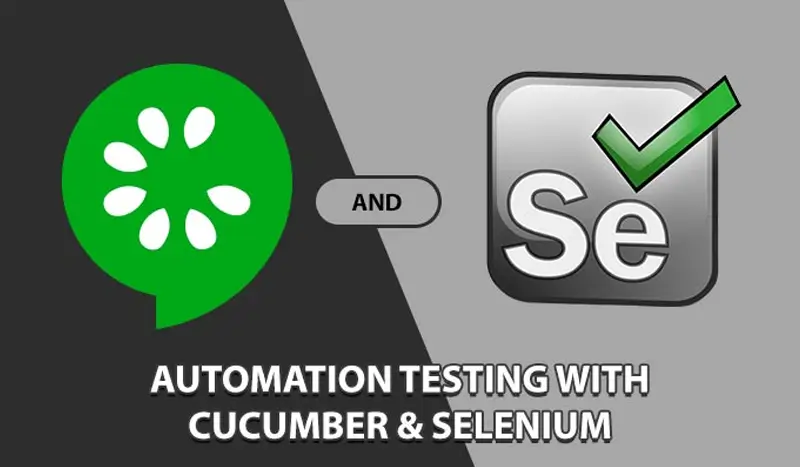Test Automation with Selenium & Cucumber
Selenium is making huge strides in becoming the most preferred automated testing tool of choice for DevOps. Although you may require a degree of technical skills to set up and manage Selenium, it is one of the most effective methods to automate testing on web browsers. Selenium integrates with other apps and tools to customize and streamline testing processes. But more recently, there has been a lot of hype around cucumber test automation.
Selenium Cucumber test automation is fast becoming a popular combination for the web application automation framework. While Selenium is primarily used for regression and functional testing, the Cucumber automation framework allows you to write easy test cases that are executed by Selenium on different browsers.
Whether you want to manage your QA or are looking to implement new tools in-house, understanding the fundamentals behind different test automation framework will arm you with the knowledge to make informed decisions.
Introduction to Cucumber
Cucumber test automation supports BDD (Behavior Driven Development), which is a technique where you write test cases in simple English sentences regardless of technical ability. Anyone will be able to understand the test case requirements when written in Cucumber with Gherkin.
The Cucumber automation framework incorporates explaining the application’s behavior using the Gherkin language. Gherkin uses a simple syntax and supports multiple programming languages like Python, Ruby, Java, etc., so you can use any language you are familiar with. The Cucumber test automation not only integrates with Selenium but other web-based testing tools like Watir and Ruby on Rails. Cucumber is open-source and is free to install and download.
What is Behavior Driven Development (BDD)?
It’s easy to read and understand application flow with Cucumber. With BDD, the test scenarios are created before the code is developed. This clears the user’s perspective taking the behavior of the system and what they want to achieve with the application.
Cucumber builds an integral link between business analysts and non-technical development resources. Anyone who understands the application’s logic does not need coding experience to write test cases and can contribute to the test processes.
Why Cucumber and Selenium?
The Cucumber automation framework in Selenium allow to run automated acceptance tests built in a BDD format. One of its best features is you can interpret plain text descriptions.
Cucumber Selenium testing is run using the tests written in Feature Files, which are easy to understand and non-technical. So, Selenium is actually the testing framework and Cucumber is the BDD tool to test at the UI layer.
A basic Cucumber test case example is testing a login page based on the below-mentioned actions:
1. Given you are on the login page
2. When you enter valid credentials
3. Then you should see your account
With expertise differing between team members Cucumber can leverage skills. Regardless of whether a person is technical or non-technical, every person in the team can still participate in developing automation tests based on business logic and workflow to create objects and calls and define data sources.
Setting up test cases in Selenium requires more programming knowledge while with Cucumber anyone who can read English write a test case for the web application interface. Selenium is an open-source automation testing framework built on Java. It interacts with the web browser interpreting the test instructions from Cucumber.
| CUCUMBER | SELENIUM |
|---|---|
| 1. It is a behavior-driven development tool. | 1.It is a functional and automation test tool. |
| 2. It is an open-source BDD tool. | 2. It is an open-source testing tool. |
| 3. Plugins work faster in Cucumber. | 3. Plugins work slower than Cucumber. |
| 4. Cucumber includes testers, developer, Business Analyst, Product Owner to write/review the test case scenarios. | 4. Selenium also includes both testers and developers to write automation steps. |
| 5. Cucumber testing is less reliable as compared to Selenium. | 5. Selenium makes testing more reliable and dependable. |
| 6. Cucumber is used to test only web applications. | 6. Selenium is also used to test only web applications. |
| 7. Cucumber automation framework supports many languages like Groovy, Java, Scala, etc. Beyond Ruby. | 7. Selenium also supports many languages like .Net, Java, etc. |
Summary,
Automation testing has become essential in reducing repetitive and manual tasks and maintaining software quality. As Selenium offers security, performance, and usability, QA testing companies choose Selenium taking advantage of software testing.
BDD is getting more attention to test important user scenarios with more business input. It supports communication between development and business so everyone has a shared understanding of what needs to be developed.







